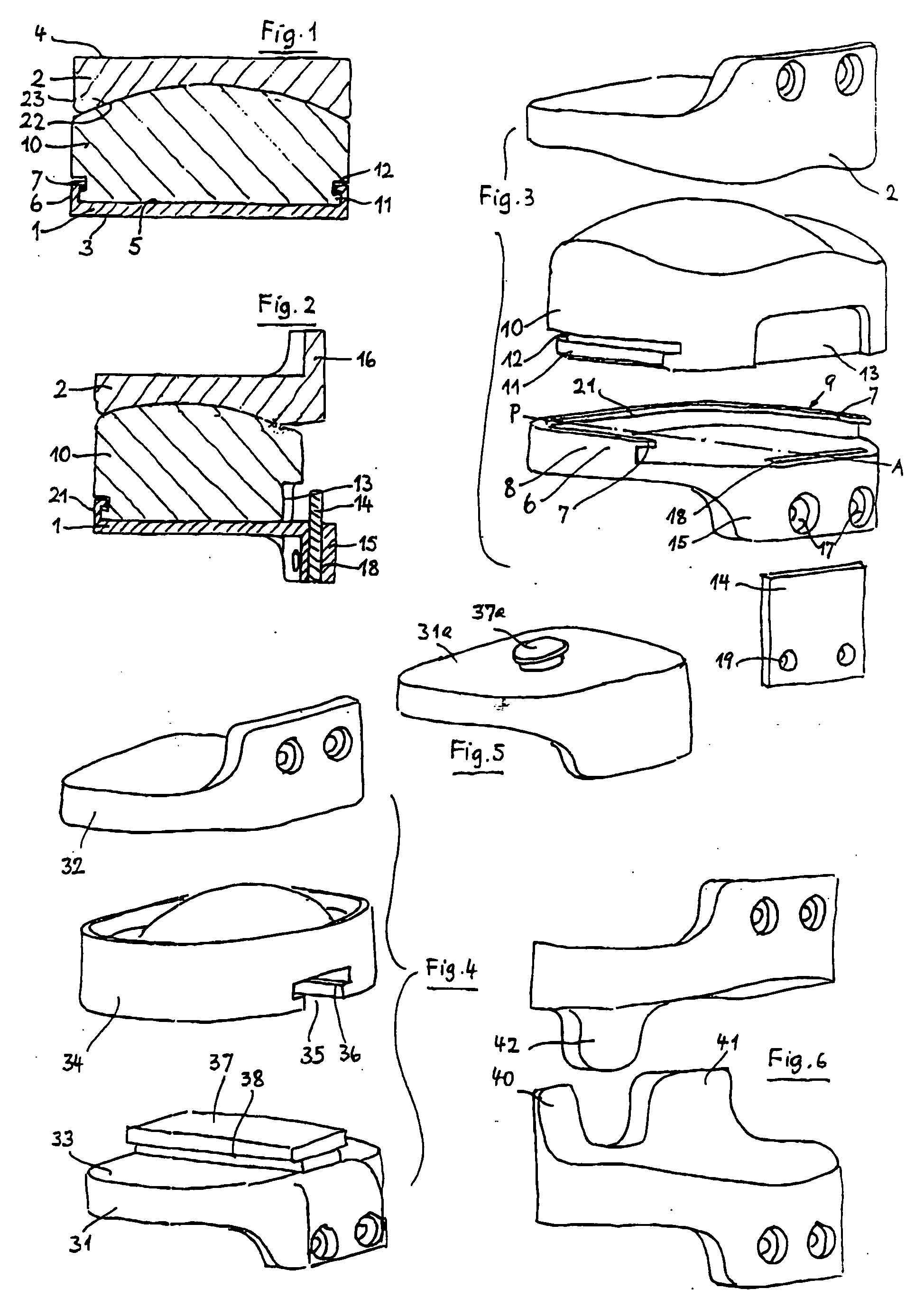Intervertebral prosthesis system, in particular for the cervical spine
a prosthesis and cervical spine technology, applied in the field of cervical spine prosthesis system, can solve the problems of inability to accommodate in the restricted intervertebral space, large structural height of the prosthesis, and lessen the capacity for load transmission, so as to achieve the effect of convenient insertion and greater freedom in design
- Summary
- Abstract
- Description
- Claims
- Application Information
AI Technical Summary
Benefits of technology
Problems solved by technology
Method used
Image
Examples
Embodiment Construction
[0021] The lower cover plate 1 and the upper cover plate 2 of the first embodiment have outer surfaces 3 and 4, respectively, which are intended for anchoring to the associated vertebral body. They are preferably plane. However, other substantially flat configurations including suitable surface structures for better anchoring to the bone are also conceivable. The cover plates are preferably made of metal.
[0022] The lower cover plate 1 has a plane upper surface 5 facing toward the upper cover plate 2 and enclosed on three sides by a collar 6 which, above an inner undercut, forms an inwardly projecting ridge 7. The lower cover plate 1 is of approximately rectangular shape in plan view. In the area of its sides 8, 9, the branches of the collar 6 located there extend parallel to one another and rectilinearly.
[0023] The upper surface 5 and the collar 6 of the lower cover plate form a seat for the prosthesis core 10, which is made of a material with good sliding properties, for example ...
PUM
 Login to View More
Login to View More Abstract
Description
Claims
Application Information
 Login to View More
Login to View More - R&D
- Intellectual Property
- Life Sciences
- Materials
- Tech Scout
- Unparalleled Data Quality
- Higher Quality Content
- 60% Fewer Hallucinations
Browse by: Latest US Patents, China's latest patents, Technical Efficacy Thesaurus, Application Domain, Technology Topic, Popular Technical Reports.
© 2025 PatSnap. All rights reserved.Legal|Privacy policy|Modern Slavery Act Transparency Statement|Sitemap|About US| Contact US: help@patsnap.com


